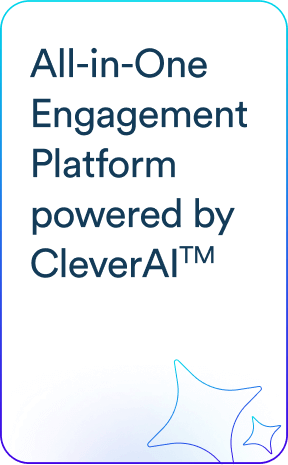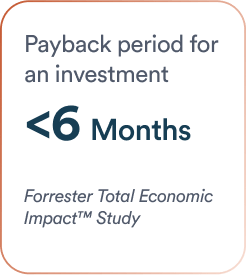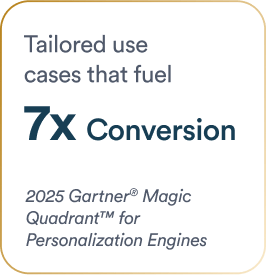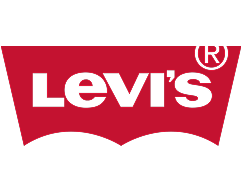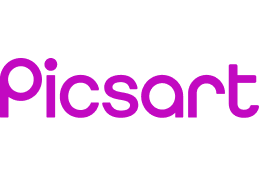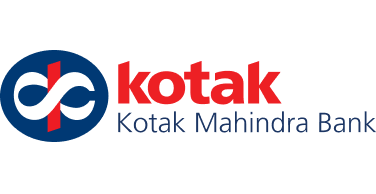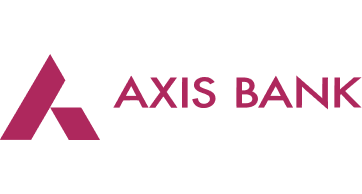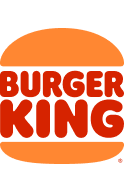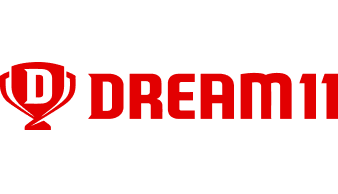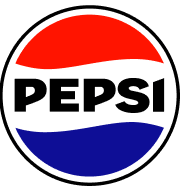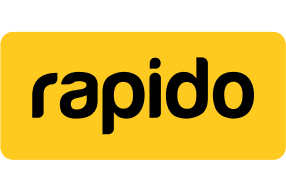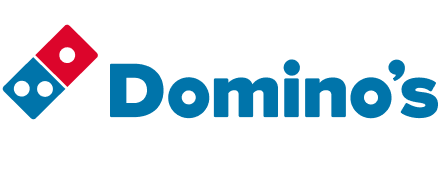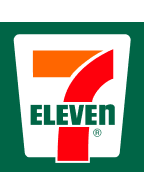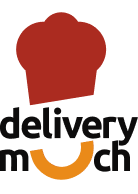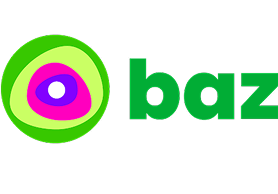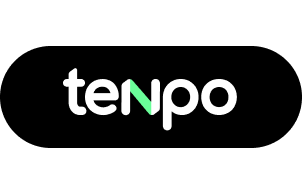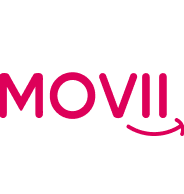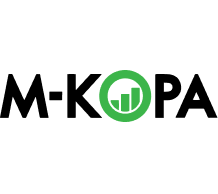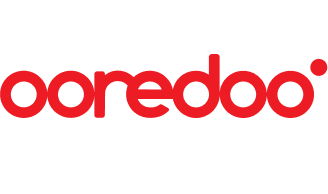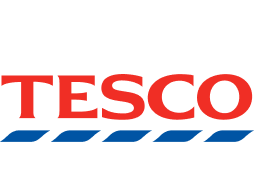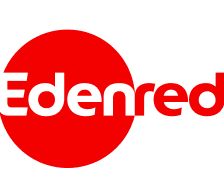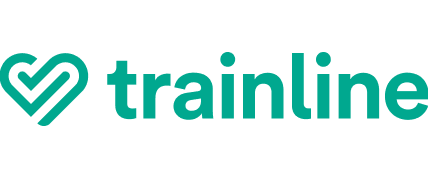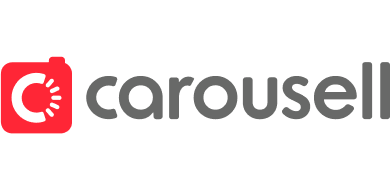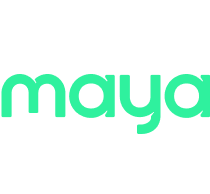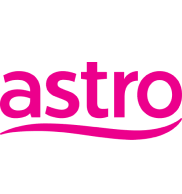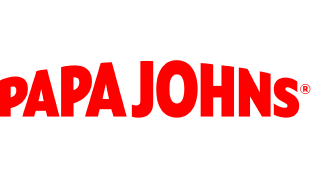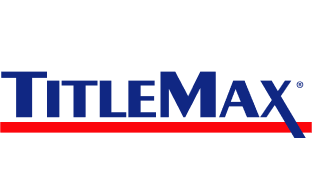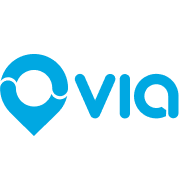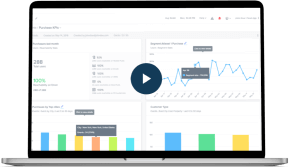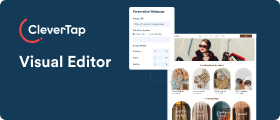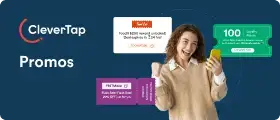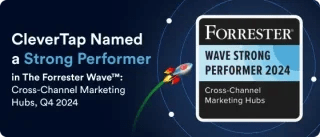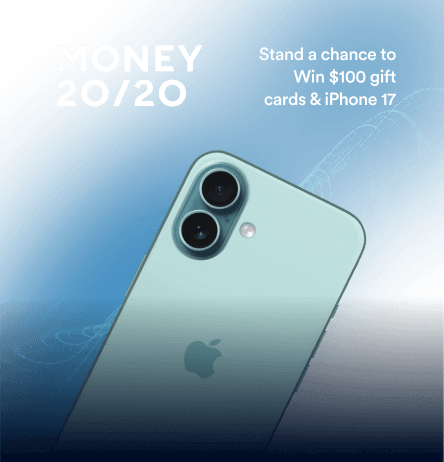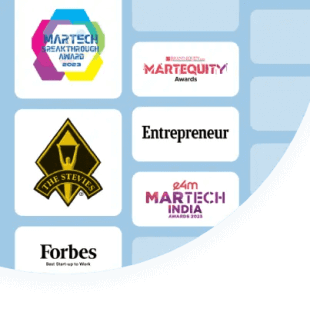This guide outlines 14 proven types of segmentation across three operational layers—market, audience, and customer. If your goal is to optimize ROI, reduce waste, and scale personalization with clarity and control, this is the place to start.
What Is Segmentation in Marketing?
Segmentation is the practice of dividing a broad user base into smaller groups based on shared traits, like behavior, location, preferences, or value to the business. It’s important because relevance drives results: when messaging matches user context, engagement, retention, and revenue improve.
You can use segmentation to personalize experiences, reduce waste, and prioritize the right users at the right time. But because there are many different types of segmentation, ranging from demographics to intent signals to lifetime value, it’s important to know which type suits your business model, audience, and growth goals.
At its core, segmentation is about understanding people. That might mean splitting users by location, habits, behaviors, or even value to your business.
If you treat a brand-new user the same way as a loyal, high-spending customer, you risk alienating both. Segmentation ensures that your communication, offers, and product nudges are timely and meaningful.
Modern segmentation typically happens on three levels:
- Market segmentation defines the broader groups that are most aligned with your product or brand. It helps you choose the right audience to target based on high-level traits like location, industry, or demographics.
- Audience segmentation drills deeper into preferences, behaviors, and communication styles. It helps tailor campaigns by identifying how people engage, what they care about, and where they’re most responsive.
- Customer segmentation focuses on people who’ve already converted. It helps you drive retention, increase value, and personalize experiences based on behaviors, transactions, and predicted lifetime value.
The strongest strategies layer all three, ensuring you’re relevant from first impression to long-term loyalty.
Types of Market Segmentation: Finding the Right Target Markets
Before you can personalize communication or optimize engagement, you need to define exactly who you are speaking to. Market segmentation provides a structured approach to identifying high-value groups across your funnel. The five types below are essential for shaping product strategy, go-to-market execution, and lifecycle messaging.
1. Demographic Segmentation
Demographic segmentation classifies users by measurable characteristics such as age, gender, income, education, and occupation. While basic, this data informs everything from brand tone to pricing and lifecycle nudges. For example, a learning app might promote affordable plans to students while highlighting upskilling benefits for professionals in their thirties.
Combining demographic traits with behavioral signals adds more precision. For instance, targeting “males aged 25–34 who abandoned onboarding at step two” yields stronger results than messaging all users in that age range.
2. Geographic Segmentation
Geographic segmentation breaks users down by location, including country, city, region, time zone, or climate. This type of segmentation is especially useful for regional offers, local compliance, and language personalization. A food delivery app might offer snow-day promotions in Chicago during winter storms or surface region-specific cuisine options in New Orleans.
To implement this at scale, you’ll need real-time location data and automation capabilities. A platform like CleverTap can help trigger region-specific campaigns without manually managing dozens of workflows.
Confused about demographic vs geographic segmentation? Read our blog to make smarter marketing decisions.
3. Psychographic Segmentation
While demographics tell you who the customer is, psychographics reveal why they behave the way they do. Psychographic segmentation analyzes values, beliefs, personality traits, lifestyle choices, and motivations.
For example, a sustainability-focused brand might target eco-conscious users who actively seek green alternatives. These users may be willing to pay more for ethically sourced products, and messaging around “planet over profit” is more likely to convert them.
You can infer psychographic traits by analyzing in-app choices, such as users consistently choosing eco-friendly filters or joining wellness challenges, then creating segments based on those preferences.
Demographic vs psychographic segmentation: what’s the real difference? Discover which one fits your strategy best in our blog.
4. Firmographic Segmentation (B2B)
Firmographic segmentation applies to organizations rather than individuals. It groups target accounts based on shared business attributes like:
- Company size
- Industry vertical
- Annual revenue
- Growth stage
- Geographic presence
For example, users from mid-sized retail companies might need quick-start onboarding and campaign templates, while those from larger financial organizations could respond better to deeper integrations and advanced functionality. Tailoring experiences based on these organizational traits helps improve relevance and performance in use cases where business context influences user behavior.
5. Technographic Segmentation
Technographic segmentation groups users based on the technology they use, such as operating systems, devices, browsers, or app versions. It’s especially useful for app-first and digital consumer brands looking to optimize performance and user experience across different platforms.
For example:
- If most users access your app via iOS, your push notifications may need to account for iOS-specific delivery behaviors.
- If a portion of your audience uses outdated browsers, you may want to simplify landing page experiences for compatibility.
Tracking users’ tech environments enables brands to tailor content and performance for different devices or platforms, without guessing where friction might occur.
Once you’ve defined your broader market segments, the next step is to refine your targeting using audience-level insights.
Types of Audience Segmentation: Tailoring Campaigns to Subgroups
Once you’ve identified your strategic market, the next layer is audience segmentation. This approach refines targeting by focusing on user preferences, lifestyle, and how they interact with your brand on different platforms.
6. Persona-Based Segmentation
Personas are semi-fictional profiles of ideal customer types, created using real user data and qualitative insights. Each persona represents a cluster of people who share common goals, pain points, buying motivations, and decision-making habits. Persona segmentation helps marketers tailor messages, features, and offers to specific user archetypes based on a deeper understanding of their context and behavior.
An edtech app might create:
- “College Crammer”: Needs bite-sized revision packs, prefers mobile-first UI, motivated by fast results.
- “Working Parent Learner”: Needs flexible scheduling, email-based reminders, and progress dashboards.
By grouping users who share behavioral and demographic traits, you can assign them to personas and trigger messaging flows tailored to each archetype’s journey stage. For example, BeBlue, a fintech app in Brazil, used CleverTap for persona-based segmentation to identify behavioral patterns and launch automated campaigns. This led to a significant increase in new active users.
7. Life Stage or Generational Segmentation
People at different stages of life engage with products differently. Grouping users by age cohorts or life events helps craft more empathetic messaging.
- Gen Z may value trendiness, digital experience, and social validation.
- Millennials may prefer convenience, brand values, and tech integration.
- Gen X and Boomers may care more about security, ease of use, and legacy value,
Apps in banking, insurance, and education often benefit from life-stage targeting. You can personalize onboarding and nurture flows using simple input fields (such as birthday or school/work status) or behaviors that correlate with life stages. For instance, to schedule habits or support preferences.
8. Channel or Device Preference Segmentation
This segmentation approach focuses on how users prefer to be contacted. Some users may engage only via email, while others respond better to SMS or push notifications. Certain users exclusively use mobile devices, while others prefer accessing content from desktops.
A well-instrumented engagement stack should track which channels drive results for each user and automatically apply fallback logic when one underperforms. This kind of channel awareness is essential to build omnichannel campaigns that feel native to each user.
9. Interest-Based Segmentation
Interest-based segmentation divides audiences based on declared or inferred preferences, such as content categories they interact with, products they browse, or communities they join.
A fitness app could create:
- Yoga Enthusiasts
- High-Intensity Interval Trainers
- First-time Beginners
Segmenting users based on content consumption, product category interest, or participation in niche in-app communities lets you deliver hyper-relevant messages, like workouts, challenges, or guides, aligned with user passion points.
After conversion, the focus shifts to retention and value optimization. Customer segmentation helps personalize experiences post-purchase.
Types of Customer Segmentation: Personalizing at Scale
Once a user converts, the focus shifts from acquisition to engagement and retention. Customer segmentation helps you personalize communication and experiences based on behavioral data, intent signals, transactional history, and predicted value.
10. Behavioral Segmentation
Behavioral segmentation divides users based on their interactions with your product. This could include app sessions, feature usage, time spent on specific screens, click-through rates, or even inactivity.
Let’s say a music app identifies a group of users who frequently use playlists but don’t explore new releases. It could promote fresh recommendations directly within those users’ preferred experience. CleverTap’s analytics suite tracks these micro-behaviors, allowing teams to build rich segments and deliver context-driven engagement.
In the case of Booky, a lifestyle app in the Philippines, behavioral segmentation helped personalize onboarding and retention messages. By targeting users based on inactivity and feature discovery metrics, the app saw a 36% increase in open rates for automated email campaigns.
11. Journey Stage Segmentation
Customer journeys are dynamic. Users move from onboarding to adoption, from inactivity to revival. Journey stage segmentation identifies which phase a user is in and adjusts communication accordingly.
For example:
- New users: Need onboarding nudges and feature walkthroughs.
- Active users: Need celebration emails and upsell offers.
- At-risk users: Need win-back messaging or incentives.
- Dormant users: May require more aggressive re-engagement workflows.
Mapping these journey stages and delivering the right message at the right time requires strong orchestration. Tools like CleverTap let you build adaptive flows that respond to user movement across lifecycle phases.
12. Transactional Segmentation
Transactional segmentation focuses on how users interact financially with your product. This includes how recently they made a purchase, how frequently they buy, and how much they typically spend, as explained in CleverTap’s RFM framework. These dimensions form what’s commonly known as RFM segmentation: Recency, Frequency, and Monetary value.
For instance, an eCommerce beauty app might use transactional segmentation to:
- Offer subscription discounts to monthly repeat buyers, encouraging auto-renewals.
- Send restock reminders to one-time purchasers who haven’t returned within a 30-day window.
- Create VIP experiences for top spenders through early access to new products or loyalty tiers.
To keep these segments updated automatically and activate them with the right triggers, platforms like CleverTap support real-time data ingestion and transaction-aware targeting.
Shawarmer, a QSR brand, used CleverTap’s RFM segmentation to boost both repeat orders and customer retention by targeting high-frequency segments with personalized campaigns. Teams can build segments that automatically update as users transact, allowing for more dynamic lifecycle campaigns. For example, a user who upgrades their basket size twice in a row might be nudged toward a premium bundle offer. Conversely, a user who hasn’t made a purchase in 90 days can be targeted with a personalized reactivation deal.
Transactional segmentation also supports long-term revenue planning. By understanding who your most valuable transactional cohorts are, you can forecast revenue more accurately and design tiered incentive programs that protect profit margins while encouraging growth.
13. Intent-Based Segmentation
Intent-based segmentation zeroes in on user behavior that indicates purchase or engagement readiness. Unlike behavioral segmentation, which looks at what users have already done, intent segmentation analyzes patterns that predict what users are likely to do next.
Common intent signals include:
- Viewing a product or feature repeatedly within a short timeframe
- Adding items to a wishlist or cart but not checking out
- Spending time on comparison pages or pricing tiers
These micro-behaviors suggest that the user is considering an action but hasn’t yet committed. CleverTap’s intent detection capabilities identify such high-signal moments and allow you to trigger:
- Limited-time offers that create urgency
- Personalized nudges, such as “Need help deciding?” messages
- Trust-building content, like customer reviews or FAQs, for hesitant users
For example, if a user adds a smartwatch to their cart and then exits the app, CleverTap can instantly segment them as “high intent – cart abandoner” and trigger a push notification offering a 10% discount valid for the next 24 hours, leveraging the methods shared in our Intent-Based Segmentation guide.
This type of segmentation not only improves conversion rates but also reduces friction in the decision-making process. It enables your brand to be proactive and responsive rather than reactive.
14. Value-Based Segmentation (LTV Tiers)
Value-based segmentation sorts users by their predicted lifetime value (LTV), helping you prioritize resources for the cohorts that contribute most to your business over time. Unlike transactional segmentation, which looks at past behavior, LTV segmentation leverages historical and predictive data to estimate a user’s future worth.
Here’s how different tiers can be used:
- High-value users: These customers frequently purchase, engage deeply with the app, and show strong loyalty. You might offer them white-glove support, early access to new features, or exclusive loyalty programs.
- Mid-value users: These customers are consistent but not fully loyal. You can use targeted upsell opportunities, personalized offers, and milestone rewards to increase their value.
- Low-value users: These are typically one-time users or those on the verge of churn. You may choose to re-engage them with introductory offers or reduce marketing investment to optimize your ROI.
Estimating LTV and segmenting users accordingly can be complex without predictive modeling. Tools like CleverTap use behavioral and transaction data to help forecast value and personalize accordingly, without a heavy data science lift.
Want to see how top brands segment their customers effectively? Read our blog on customer segmentation examples to find the best approach for your business.
Over time, this kind of value-aware segmentation ensures resources are aligned with your most impactful users, maximizing both profitability and retention. Tata StarQuik leveraged this approach to automate lifecycle-based campaigns that helped recover dormant users and improve high-value customer loyalty. This is rooted in CleverTap’s customer lifecycle management capabilities.
This enables marketers to design journeys that match the user’s future value potential, not just their past actions, drawing on insights from the platform’s customer data and analytics features. For example, you can automatically suppress discounts for high-value users who don’t need incentives to convert, while offering bundles or time-limited deals to nurture mid-tier segments.
By aligning marketing efforts with customer value, LTV-based segmentation ensures you’re spending the right resources on the right users-maximizing both short-term gains and long-term loyalty.
Read our blog on the top customer segmentation tools to find the best choice for your business.
How These Segmentation Types Work Together
Each segmentation layer, market, audience, and customer, offers unique value when used individually. Market segmentation defines who you target. Audience segmentation refines how you communicate. Customer segmentation optimizes how you engage after conversion.
But the real power of segmentation lies in orchestration, when all three layers operate together as part of a unified engagement strategy. Modern growth teams no longer rely on one-dimensional segments or static user lists. Instead, they build full-funnel engagement systems that evolve dynamically with the user, adapting touchpoints, content, and timing based on where each individual is in their journey.
This multi-layered approach ensures that every interaction, whether it’s a first impression or a loyalty push, is contextually relevant, experience-driven, and behavior-aware.
Use Case: A Fitness App Applying Multi-Layered Segmentation
Here’s how a fitness app could apply segmentation across all three layers to deliver a truly personalized experience:
Market Segmentation
The app starts by identifying a high-potential target market: urban millennials aged 25 to 35, living in large metro areas, digitally fluent, and health-conscious. This helps the brand focus its acquisition efforts, guiding decisions around product positioning, ad creatives, influencer partnerships, and onboarding tone.
By zeroing in on this group, the app ensures that its messaging resonates from the first touch, whether through app store descriptions, social ads, or promotional banners, setting the right expectations upfront.
Audience Segmentation
Within this broad market, users are further segmented based on fitness preferences, lifestyle behaviors, and channel engagement patterns. This helps the app fine-tune messaging to match each user’s intent and motivation.
- Yoga Enthusiasts receive calming push notifications, guided breathing exercises, and playlists for flexibility routines.
- HIIT (High-Intensity Interval Training) Users are sent performance-focused challenges, goal-oriented progress trackers, and reminders to log daily workouts.
- Casual or New Fitness Users are engaged with encouraging tips, gentle reminders, and beginner-friendly workout plans that build confidence.
Communication style also varies by user preference. Some users receive updates via push notifications, while others receive them through email or in-app notifications, depending on their past engagement habits.
This layer ensures that the same product feels different to different users, because what motivates one group might overwhelm another.
Customer Segmentation
Once users are active in the app, segmentation deepens. Now, it’s no longer about who they are or what they like, but what they actually do. The app begins to tailor experiences and trigger actions based on real-time behavior and lifecycle stage:
- New Users receive progressive onboarding flows, feature walkthroughs, and milestone celebrations to build early momentum.
- Engaged Users see personalized workout recommendations, subscription nudges, and tiered rewards based on consistency and app usage.
- At-Risk or Dormant Users trigger re-engagement workflows, such as streak recovery nudges, motivational messaging, or limited-time content unlocks, to win them back.
Here, segmentation fuels experience design. The app doesn’t just market to users, it responds to them, in the moment, based on evolving context.
How to Choose the Right Segmentation Method
With more than a dozen segmentation types at your disposal, picking the right mix can feel daunting. The optimal strategy always hinges on three pillars: your business objective, data maturity, and execution capacity. Follow the expanded checklist below to arrive at a methodical, defensible decision.
1. Define Your Business Objective
Start with a single question: “What business problem are we trying to solve with segmentation?” Map your goal to the correct type of segmentation to prevent scope creep and wasted effort.
| Primary Goal | Best-Fit Segmentation Layer | Typical Methods | Why They Work |
| Acquire new users | Market segmentation | Demographic, geographic, (light) firmographic | Helps pinpoint high-potential audiences and localize acquisition messaging. |
| Improve campaign efficiency | Audience segmentation | Channel preference, persona, device, interest | Refines creative, reduces irrelevant impressions, and lowers CPA. |
| Drive retention & revenue | Customer segmentation | Behavioral, intent-based, value/LTV | Maximizes lifecycle value, boosts upsells, and mitigates churn. |
Tip: Document a single KPI for each objective. For example, install-to-signup rate for acquisition, repeat-purchase frequency for retention, to measure impact unambiguously.
2. Evaluate Your Data Readiness
Segmentation quality rises and falls with data quality. Conduct a quick diagnostic:
- Inventory your data sources
- First-party: mobile app events, web analytics, CRM, POS, subscription logs
- Second/third-party: enrichment APIs, ad platform audiences, survey results
- Assess structure & accessibility
- Is the data clean, schema-consistent, and timestamped?
- Can you join user attributes and events via a stable user ID?
- Determine real-time vs. batch requirements
- Static segmentation (updated daily/weekly) works for demographics or geography.
Dynamic segmentation (updated continuously) is essential for behavioral, intent, or LTV models.
- Static segmentation (updated daily/weekly) works for demographics or geography.
- Identify tooling gaps
- If you’re storing raw events but lack a segmentation engine, a customer-engagement platform such as CleverTap (or an equivalent CDP) can ingest the data and maintain live cohorts with little engineering overhead.
- If you’re storing raw events but lack a segmentation engine, a customer-engagement platform such as CleverTap (or an equivalent CDP) can ingest the data and maintain live cohorts with little engineering overhead.
If data is sparse or siloed: start simple—e.g., gender + location—and layer on behavior as tracking improves.
If data is abundant and real-time: move toward predictive models that update segments automatically.
3. Assess Your Team’s Execution Capabilities
Even perfect data can’t save a segmentation plan that the team can’t operationalize.
| Question | Why It Matters | Red Flags |
| Can your team manage multiple active segments? | More segments mean more creative, QA, and reporting overhead. | Reliance on manual CSV uploads or ad-hoc lists. |
| Do you have omnichannel automation in place? | Segments are only useful if they trigger timely, channel-specific actions. | One-off blast campaigns; no cross-channel logic. |
| Can your tech stack handle personalization at scale? | Real-time decisions require APIs, event streaming, and templating. | Static email builders; no push/SMS orchestration. |
If gaps appear, prioritize tooling that automates labor-intensive steps, for example, a journey builder that pulls users into flows as soon as they meet segment criteria. A platform like CleverTap can play a pivotal role here by:
- Maintaining live segments that update in real time as users take actions
- Triggering automated, omnichannel campaigns across push, email, in-app, SMS, and WhatsApp
- Offering predictive models (e.g., churn likelihood, LTV potential) without the need for custom ML or data science pipelines
CleverTap is designed to support both lean and scaled teams, enabling marketers to transition from static, rule-based campaigns to data-driven, personalized journeys with minimal engineering effort.
Benefits of a Strong Segmentation Strategy
An effective segmentation strategy creates a ripple effect across every key performance metric in marketing, retention, and user satisfaction. Here’s what you stand to gain:
- Higher Engagement & Conversions: Personalized messaging increases relevance, leading to more clicks, app sessions, and purchases.
- Better Customer Experience: When users feel understood, they’re more likely to stay loyal. Segmentation ensures users receive messages aligned with their needs and context.
- Lower Churn & Greater Retention: At-risk users can be identified early and re-engaged before they drop off, improving long-term retention and reducing re-acquisition costs.
- Improved ROI & Marketing Efficiency: Segmentation allows you to focus campaigns on high-value or high-intent cohorts-improving ROAS and reducing budget wastage.
- Deeper Alignment Across Teams: Product, marketing, and growth teams can align around shared segments and lifecycle stages-driving coordinated messaging and experiences.
- Stronger Lifetime Value Growth: When segments are nurtured with personalized journeys, upsell opportunities, and loyalty naturally follow, boosting user LTV over time.
In short, segmentation transforms marketing from a one-size-fits-all effort into a scalable engine for sustainable growth.
How CleverTap Helps You Segment and Personalize at Scale
CleverTap is purpose-built to help teams deliver customer engagement at scale, without relying on engineering. Whether you’re looking to drive growth, improve retention, or personalize every touchpoint, CleverTap gives you the tools to make it happen.
Live Segments That React in Real Time
With CleverTap, you can build dynamic user segments using a mix of behavioral data, device type, location, and demographics. These segments refresh in real time as users interact with your product, so you’re always acting on the most current data. Even better, you can work with up to 10 years of historical behavior to refine your targeting over time.
Smarter Targeting With Predictive Cohorts
Built-in machine learning helps you go beyond rules-based segmentation. CleverTap automatically identifies users likely to convert, churn, or deliver long-term value. Using frameworks like RFM (Recency, Frequency, Monetary), you can segment your audience by engagement level and personalize your outreach accordingly.
Journeys That Adapt to Every User
CleverTap’s Journey Builder lets you design campaigns that respond to real user behavior. Whether it’s onboarding, upsell, or win-back, journeys update in real time as customers move through different stages. Features like IntelliNODE help you test multiple paths and automatically steer users toward the most effective ones.
Personalized Engagement Across Every Channel
With support for over 15 channels, including push, in-app, email, SMS, WhatsApp, web, and voice, CleverTap lets you orchestrate cross-channel campaigns from a single place. You can personalize each message using user profile data, past behavior, and predictive insights, all without switching tools or writing a line of code.
Deeper Insights to Unlock What Works
Every campaign is tied back to analytics. With built-in dashboards, funnels, and cohort analysis, you can track how users respond at each step. It’s easy to see what’s working, what’s not, and where to optimize, so you’re never guessing.
Continuous Experimentation to Optimize Performance
CleverTap makes it easy to run A/B and multivariate tests across your messages, journeys, and channels. You can quickly test subject lines, creatives, send times, and journey paths to see what drives better results. The best-performing variant can be automatically scaled to your entire audience, helping you make smarter, faster decisions without manual intervention.
Built for Marketers, No Coding Required
Unlike platforms that require SQL queries or developer support for advanced segmentation, CleverTap empowers marketers to launch sophisticated campaigns entirely on their own. From drag-and-drop journey builders to one-click predictive segments, every feature is designed for speed, autonomy, and ease of use. This means faster go-to-market and fewer bottlenecks.
Built on a Foundation of Real-Time, Unified Data
At the core is TesseractDB™, CleverTap’s proprietary data platform. It gives you instant access to billions of data points, stores behavioral events for up to a decade, and processes data in real time. That means no latency, no batching delays, and no reliance on third-party tools to act on user data.
CleverTap brings data, intelligence, and engagement together, so your team can build powerful, personalized experiences that scale. No engineering dependencies. No disconnected tools. A unified platform that helps you move faster, engage smarter, and grow better.
Power intelligent customer journeys with dynamic segmentation from CleverTap.
Conclusion
Segmentation isn’t optional in today’s marketing landscape; it’s essential. Brands that don’t segment send irrelevant messages and risk being ignored or uninstalled. But brands that segment strategically can drive powerful growth through personalization, loyalty, and lifetime value.
Whether you’re looking to launch new campaigns, localize your product, or double down on retention, segmentation gives you the framework to do it with precision. Platforms like CleverTap make this easier by taking the guesswork out of who to target, when, and how. With AI-powered customer segmentation, behavioral insights, and real-time orchestration, your team can deliver the right message to the right user, every single time.
Explore CleverTap’s segmentation capabilities to personalize your customer journey at scale.
Shivkumar M 
Head Product Launches, Adoption, & Evangelism.Expert in cross channel marketing strategies & platforms.
Free Customer Engagement Guides
Join our newsletter for actionable tips and proven strategies to grow your business and engage your customers.

